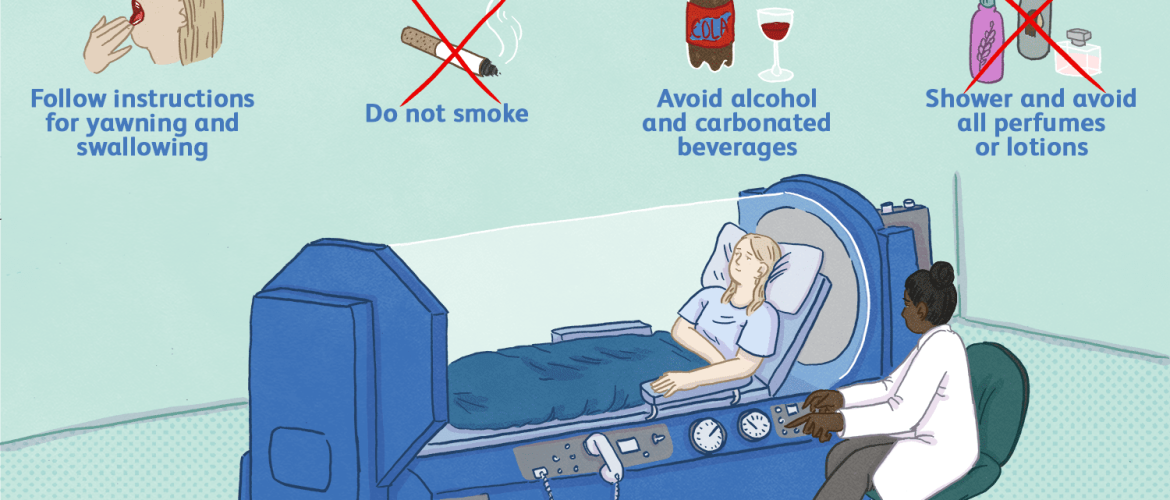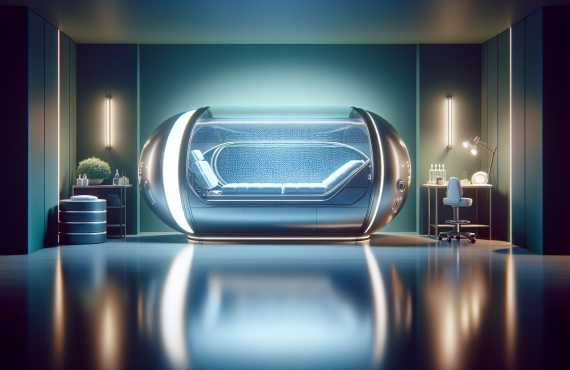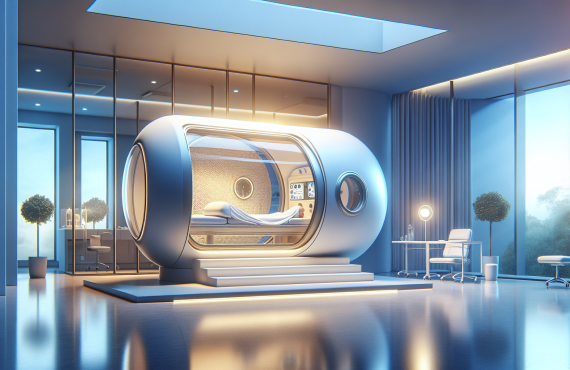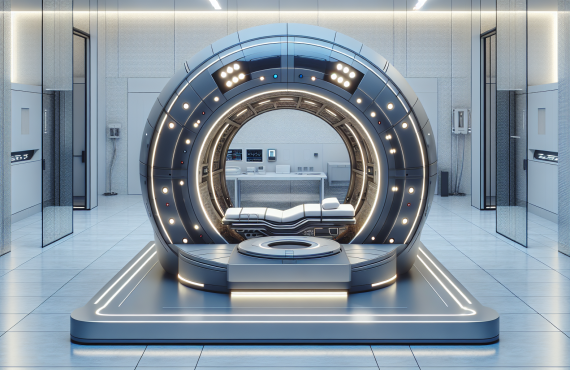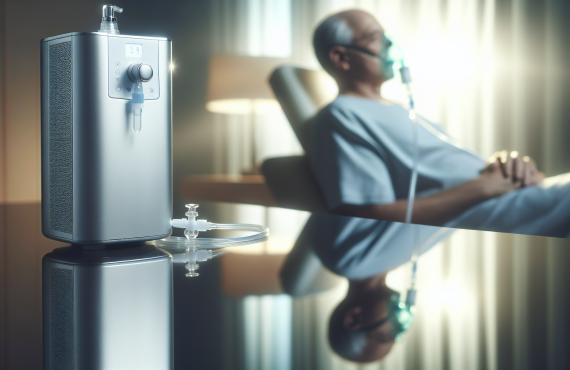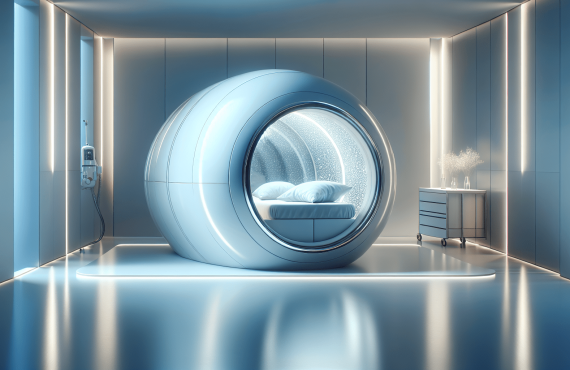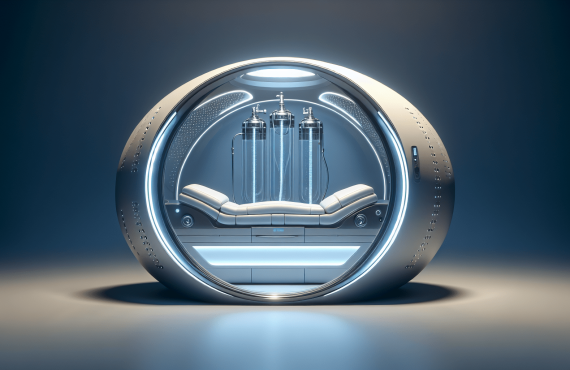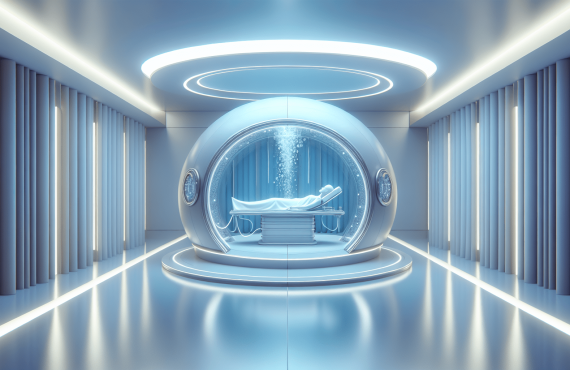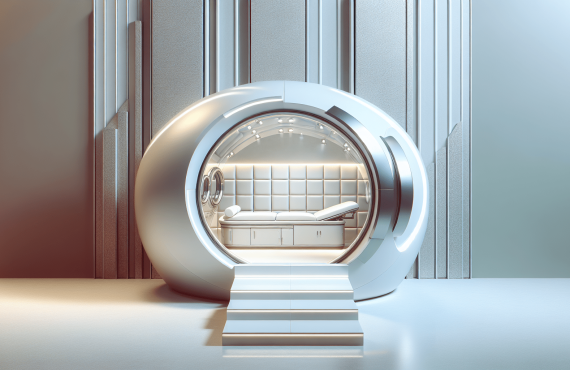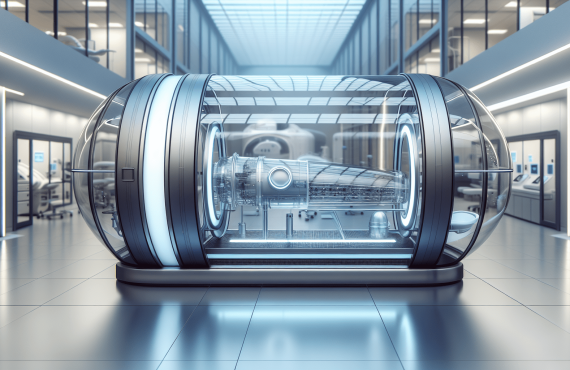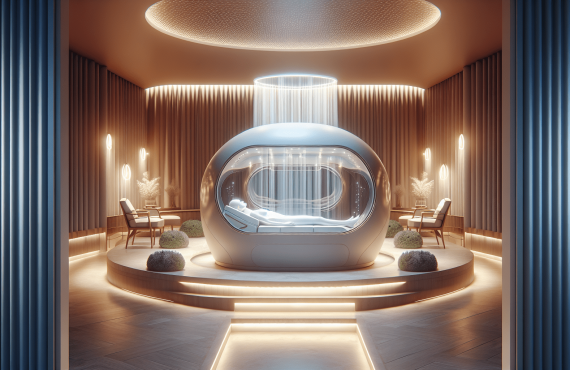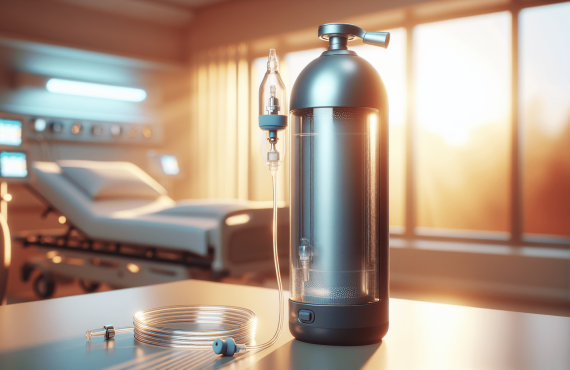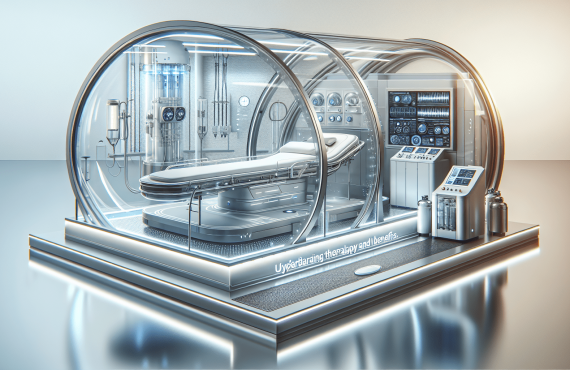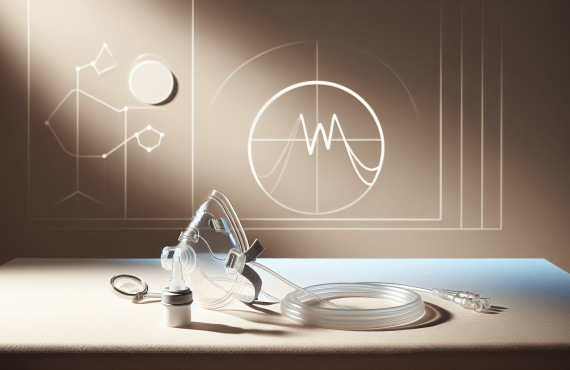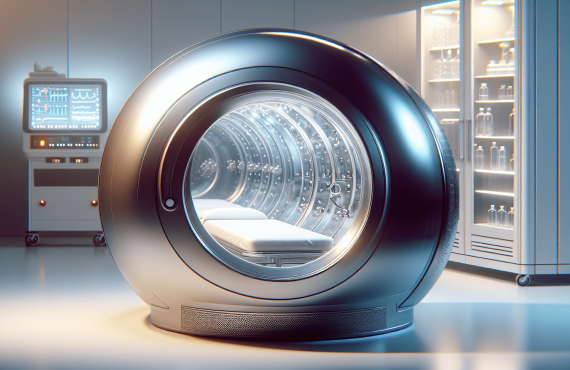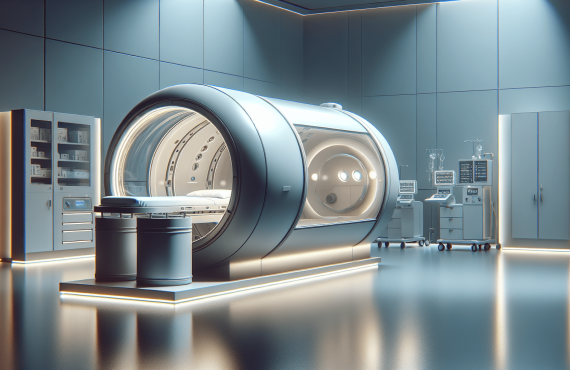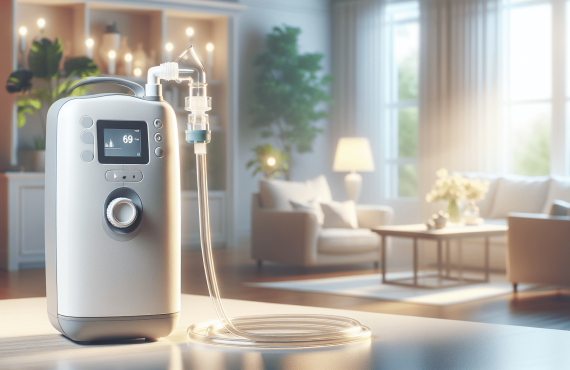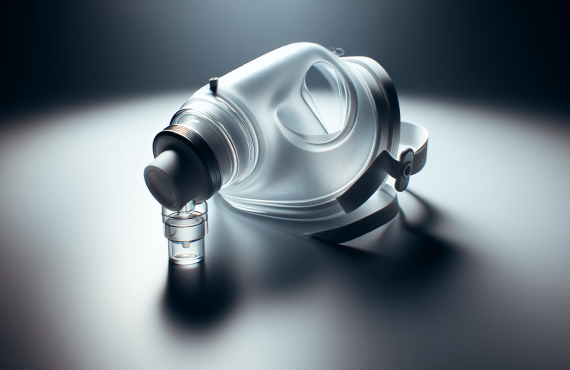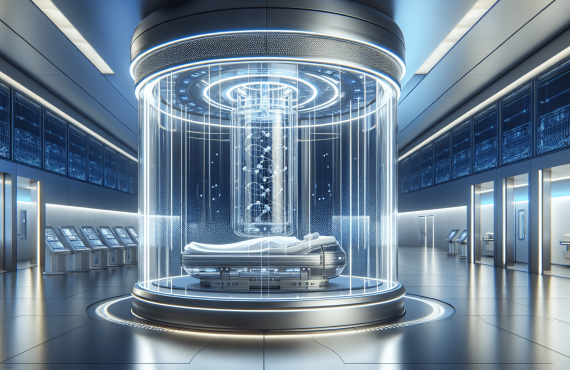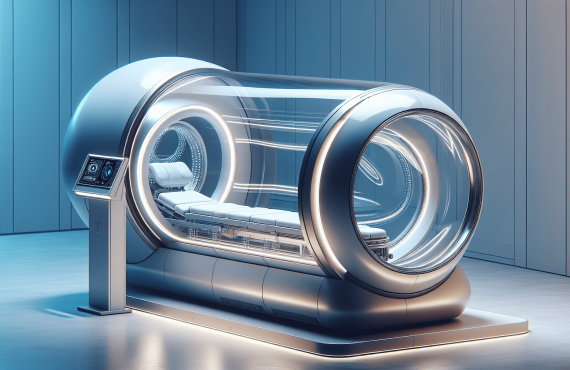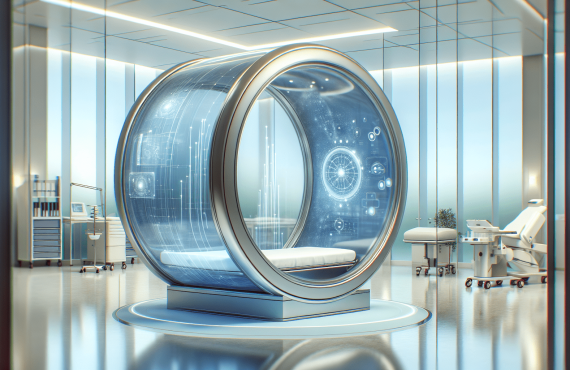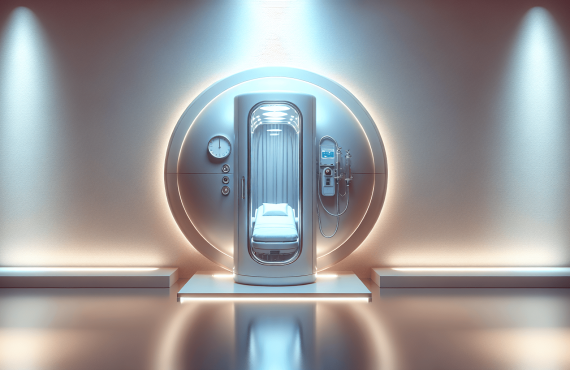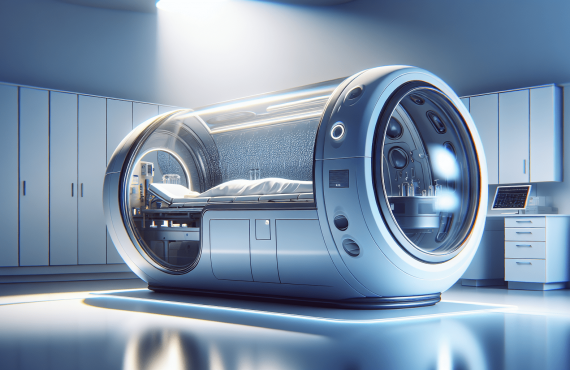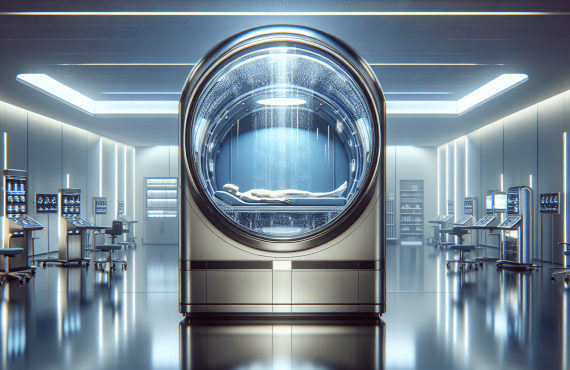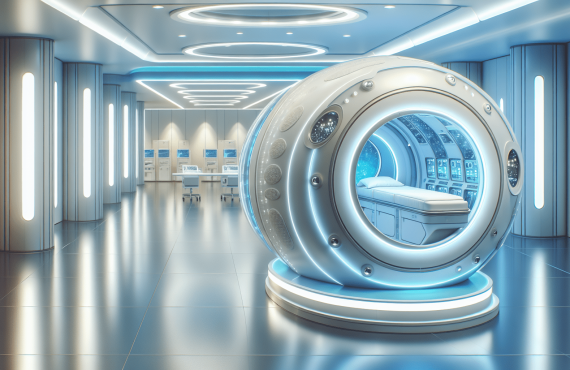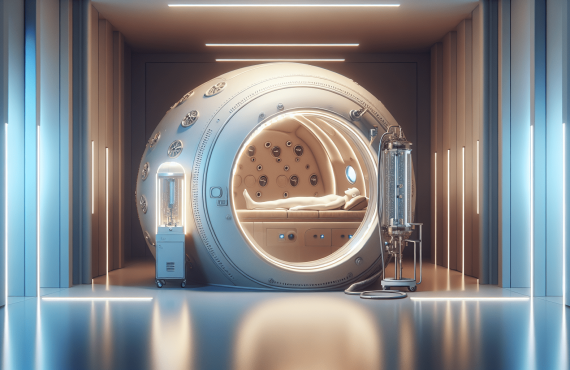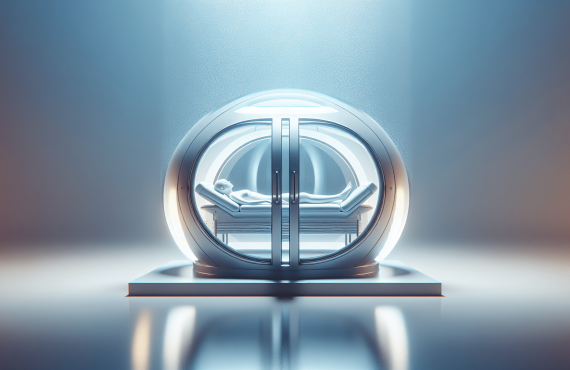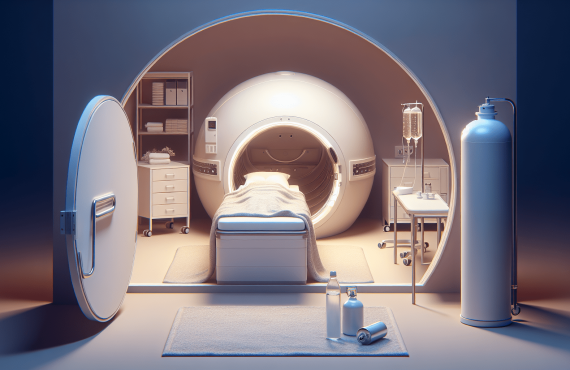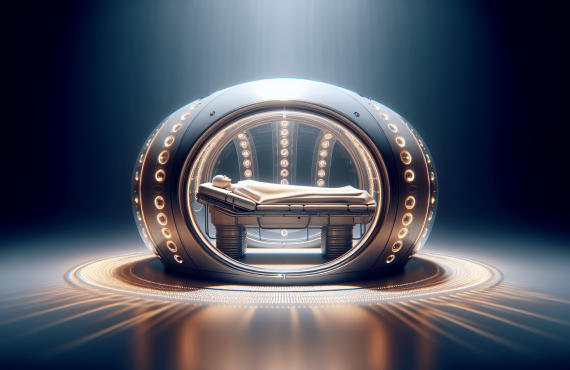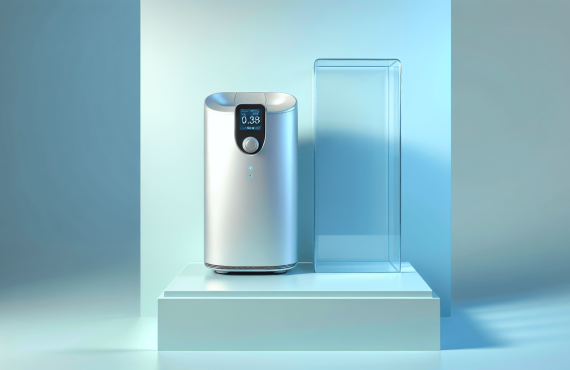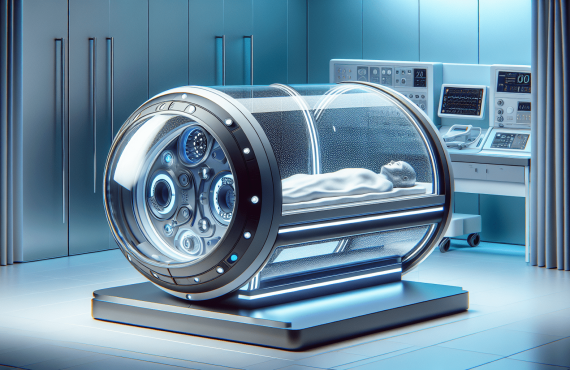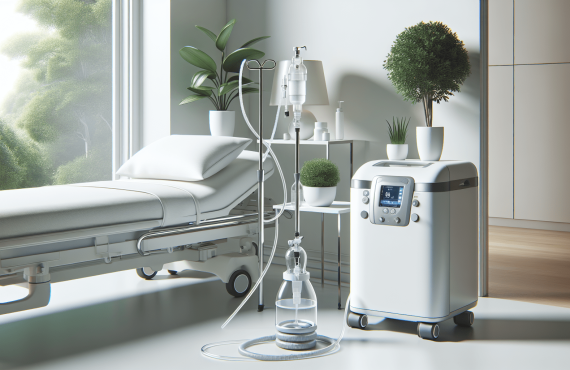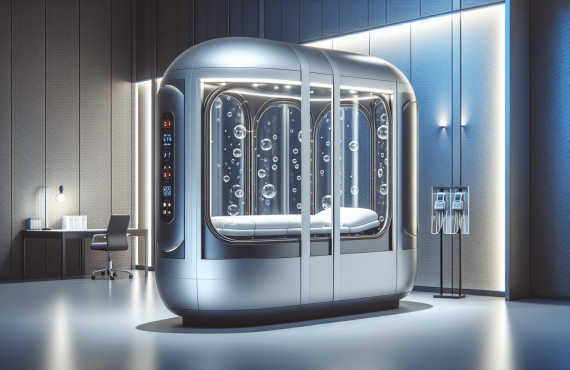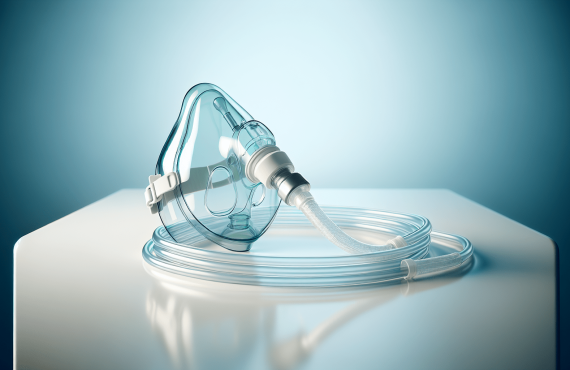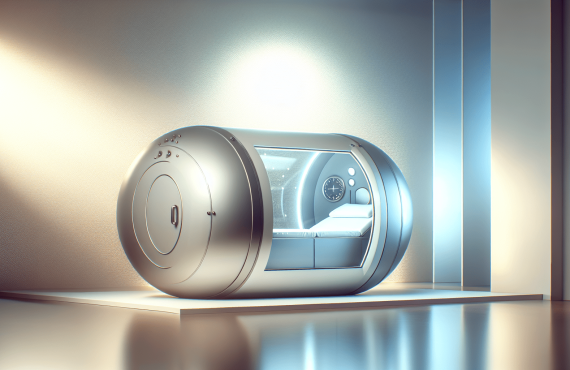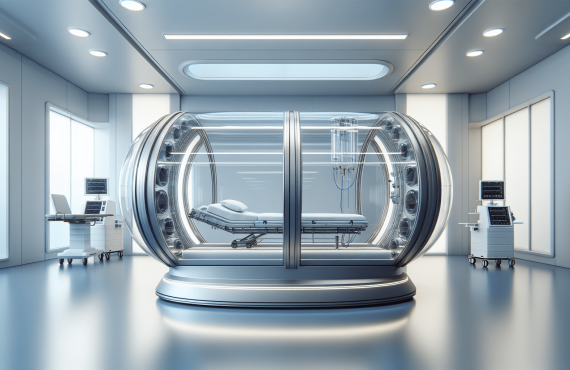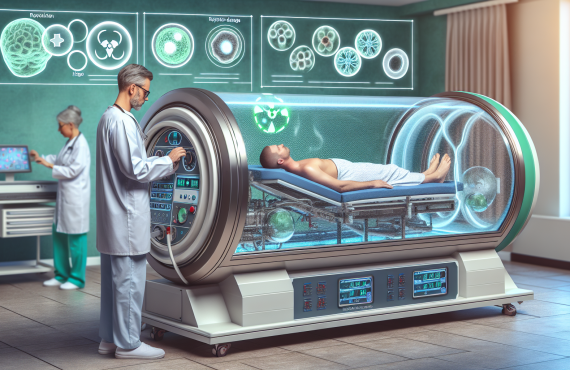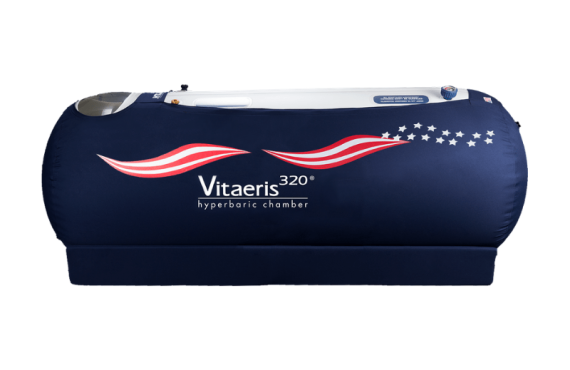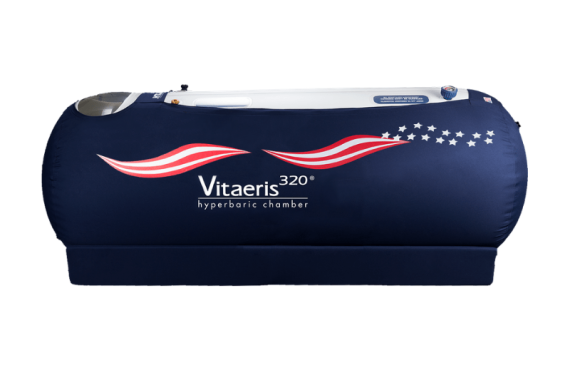Are you curious about hyperbaric therapy and its uses? Look no further! At Henry Chiropractic, owned and operated by the esteemed Dr. Craig Henry, we strive to improve your well-being through chiropractic care. Located in Pensacola, FL, our team of expert chiropractors, including Dr. Aaron Hixon, is dedicated to helping you live a healthier life. But what exactly is hyperbaric therapy used for? Let’s explore the possibilities together.
:max_bytes(150000):strip_icc()/hyperbaric-chamber-treatment-4582432-5c701740c9e77c000149e4af.png)
This image is property of www.verywellhealth.com.
Table of Contents
Understanding Hyperbaric Therapy
Hyperbaric therapy, also known as hyperbaric oxygen therapy (HBOT), is a medical treatment that involves breathing pure oxygen in a pressurized chamber. This therapy is based on the principle that the increased pressure and higher oxygen concentration can help in various healing processes and providing therapeutic benefits to the body.
Definition of Hyperbaric Therapy
Hyperbaric therapy is a treatment method that involves the inhalation of 100% pure oxygen in a pressurized chamber. The pressure in the chamber is increased to higher levels than atmospheric pressure, allowing the oxygen to dissolve more effectively in the blood and tissues. This increased oxygen delivery promotes healing, reduces inflammation, and stimulates the growth of new blood vessels.
How Hyperbaric Therapy Works
During a hyperbaric therapy session, you will be placed in a specially designed chamber that can be pressurized. The chamber will be gradually pressurized with compressed air or oxygen, which will cause an increase in the atmospheric pressure around you. You will then breathe in 100% pure oxygen through a mask or a hood.
Under these conditions, the increased pressure allows the oxygen to dissolve in the fluids of the body at a much higher concentration. This concentrated oxygen is then transported by the bloodstream to all parts of the body, including areas with restricted blood flow or areas affected by injury or disease.
The high concentration of oxygen in the tissues triggers various beneficial effects, such as reducing inflammation, promoting the formation of new blood vessels, enhancing the body’s natural defense mechanisms, and improving the overall healing process.
History of Hyperbaric Therapy
The use of hyperbaric therapy can be traced back to the 17th century when a British physician named Robert Boyle discovered the phenomenon of gas volume under pressure. This discovery led to the development of hyperbaric chambers and the use of compressed air to treat various conditions.
In the early 20th century, hyperbaric therapy gained attention during the treatment of decompression sickness in deep-sea divers. It was later recognized for its effectiveness in treating other conditions, such as carbon monoxide poisoning, non-healing wounds, and radiation tissue damage.
Since then, hyperbaric therapy has continued to evolve and is now widely accepted as a safe and effective treatment option for a range of medical conditions.
Types of Hyperbaric Chambers
There are two main types of hyperbaric chambers: monoplace chambers and multiplace chambers.
Monoplace chambers are designed for one person at a time and are typically enclosed acrylic tubes or capsules. The chamber is pressurized with either compressed air or pure oxygen, and the patient lies down on a stretcher inside the chamber.
Multiplace chambers, on the other hand, are designed to accommodate multiple individuals. These chambers are usually large, metal enclosures that can be pressurized with compressed air or a mixture of air and oxygen. The patients can sit or lie down comfortably during the treatment session, and medical staff can provide care and support within the chamber.
Both types of chambers are safe and effective, but the choice of chamber depends on the specific needs of the patient and the medical condition being treated.
Medical Uses of Hyperbaric Therapy
Hyperbaric therapy has a wide range of medical uses and can be beneficial in treating various conditions. Here are some of the most common applications of hyperbaric therapy:
Treatment of Decompression Sickness
Decompression sickness, also known as “the bends,” occurs when nitrogen bubbles form in the body’s tissues due to rapid changes in pressure, typically seen in deep-sea divers or aviation personnel. Hyperbaric therapy helps to reduce the size of these bubbles and promote their elimination, relieving the symptoms associated with decompression sickness.
Wound Healing and Tissue Repair
Hyperbaric therapy can significantly accelerate wound healing and promote tissue repair. The increased concentration of oxygen in the tissues facilitates the growth of new blood vessels and enhances the body’s ability to fight infection. It is commonly used to treat problematic wounds, such as diabetic ulcers, non-healing surgical wounds, and pressure sores.
Radiation Tissue Damage
Radiation therapy is commonly used for the treatment of cancer. However, it can also damage healthy tissues surrounding the targeted area. Hyperbaric therapy can mitigate the effects of radiation tissue damage by improving blood flow, reducing inflammation, and promoting the healing of damaged tissues.
Carbon Monoxide Poisoning
Carbon monoxide is a toxic gas, and exposure to high levels can be life-threatening. Hyperbaric therapy helps to rapidly eliminate carbon monoxide from the bloodstream by increasing its rate of elimination and replacing it with oxygen. This treatment is crucial in preventing severe complications and reducing the risk of long-term neurological damage.
Gas Gangrene
Gas gangrene is a severe and potentially life-threatening infection caused by certain bacteria that thrive in low-oxygen environments. Hyperbaric therapy enhances oxygen delivery to the infected tissues, creating an inhospitable environment for the bacteria to survive and promoting the effectiveness of antibiotics.
Crush Injuries
Crush injuries, such as those resulting from accidents or trauma, can cause damage to the tissues and disrupt blood flow. Hyperbaric therapy helps to reduce tissue damage, improve circulation, and enhance the body’s natural healing response, increasing the chances of a successful recovery.
Non-healing Diabetic Wounds
Diabetic foot ulcers are a common complication of diabetes and are often challenging to heal due to compromised blood flow and impaired wound healing mechanisms. Hyperbaric therapy can significantly improve the healing process by stimulating the growth of new blood vessels and enhancing tissue oxygenation.
Traumatic Brain Injuries
Traumatic brain injuries can result in significant damage to the brain tissue due to restricted blood flow and oxygen deprivation. Hyperbaric therapy has shown promising results in improving neurological function, reducing inflammation, and promoting the repair and regrowth of damaged brain tissues.
Infections
Hyperbaric therapy can assist in the treatment of various infections, particularly those caused by anaerobic bacteria that thrive in low-oxygen environments. The high concentration of oxygen in the tissues helps to suppress bacterial growth and supports the body’s immune response to fight off the infection.
Autism
Although not a traditional medical use, hyperbaric therapy has gained attention as an alternative treatment for individuals with autism. Some studies suggest that the increased oxygen levels and enhanced blood flow to the brain may improve certain symptoms of autism, such as social interaction, communication, and behavior.
Hyperbaric Therapy Procedure
Understanding the procedure involved in hyperbaric therapy can help alleviate any concerns and prepare you for your session. Here is an overview of what to expect during a hyperbaric therapy session:
Preparation for a Hyperbaric Therapy Session
Before your hyperbaric therapy session, it is essential to follow any specific preparation instructions provided by your healthcare provider. This may include instructions on fasting or avoiding certain medications.
You will be provided with information on what to wear during the session, as certain materials can be hazardous in the pressurized environment. It is usually recommended to wear loose, comfortable clothing made of natural fibers and to remove any jewelry or accessories.
The Hyperbaric Chamber Experience
When you arrive at the hyperbaric therapy facility, you will be greeted by the medical staff who will guide you through the process. You may be asked to fill out necessary forms and provide your medical history to ensure your safety during the session.
Once it is time for your session, you will be escorted to the hyperbaric chamber. Depending on the type of chamber, you will either lie down on a stretcher or sit comfortably inside the chamber.
The chamber will be sealed, and the pressure will gradually increase to the prescribed level. You may experience a sensation similar to that of flying in an airplane or diving underwater as the pressure changes.
Inside the chamber, you will have access to communication devices to communicate with the medical staff overseeing your session. You may also be provided with entertainment options, such as music or movies, to help pass the time.
Length and Frequency of Hyperbaric Therapy Sessions
The length and frequency of hyperbaric therapy sessions vary depending on the specific condition being treated and the treatment plan prescribed by your healthcare provider. Each session typically lasts between 60 to 120 minutes, but shorter or longer sessions may be recommended in some cases.
The total number of sessions required can range from a few to several dozen, with intervals ranging from once daily to a few times per week. Your healthcare provider will determine the optimal treatment plan based on your individual needs and the response to therapy.
Safety Considerations
Hyperbaric therapy is generally considered safe. Before starting the treatment, your healthcare provider will assess your medical history and any potential risks or contraindications for the therapy.
During the session, you will be closely monitored by medical staff who will ensure your comfort and safety. The chamber will be equipped with safety features and emergency protocols to address any unforeseen situations.
It is normal to experience temporary changes in pressure in your ears, similar to what you may experience while flying or diving. Techniques such as swallowing, yawning, or using the Valsalva maneuver can help equalize the pressure and alleviate any discomfort.
Benefits and Risks of Hyperbaric Therapy
Hyperbaric therapy offers several benefits for patients with various medical conditions, but like any medical intervention, it also carries some potential risks and side effects. Here are some of the benefits and risks associated with hyperbaric therapy:
Benefits of Hyperbaric Therapy
- Accelerates wound healing and tissue repair
- Reduces inflammation and swelling
- Enhances the body’s natural defense mechanisms
- Stimulates the growth of new blood vessels
- Increases oxygen supply to the tissues
- Supports the effectiveness of antibiotics
- Improves neurological function in certain brain injuries
- Promotes recovery from radiation tissue damage
- Enhances oxygenation in compromised tissues
- Potential benefits in certain autism symptoms
Potential Risks and Side Effects
While hyperbaric therapy is generally safe, some potential risks and side effects may occur. These can include:
- Changes in ear pressure and temporary discomfort
- Temporary worsening of existing symptoms
- Temporary nearsightedness (myopia)
- Oxygen toxicity in rare cases, with symptoms including seizures, lung damage, or visual changes
It is essential to discuss any concerns or potential risks with your healthcare provider before starting hyperbaric therapy. They will evaluate your individual circumstances and ensure that the benefits outweigh any potential risks.
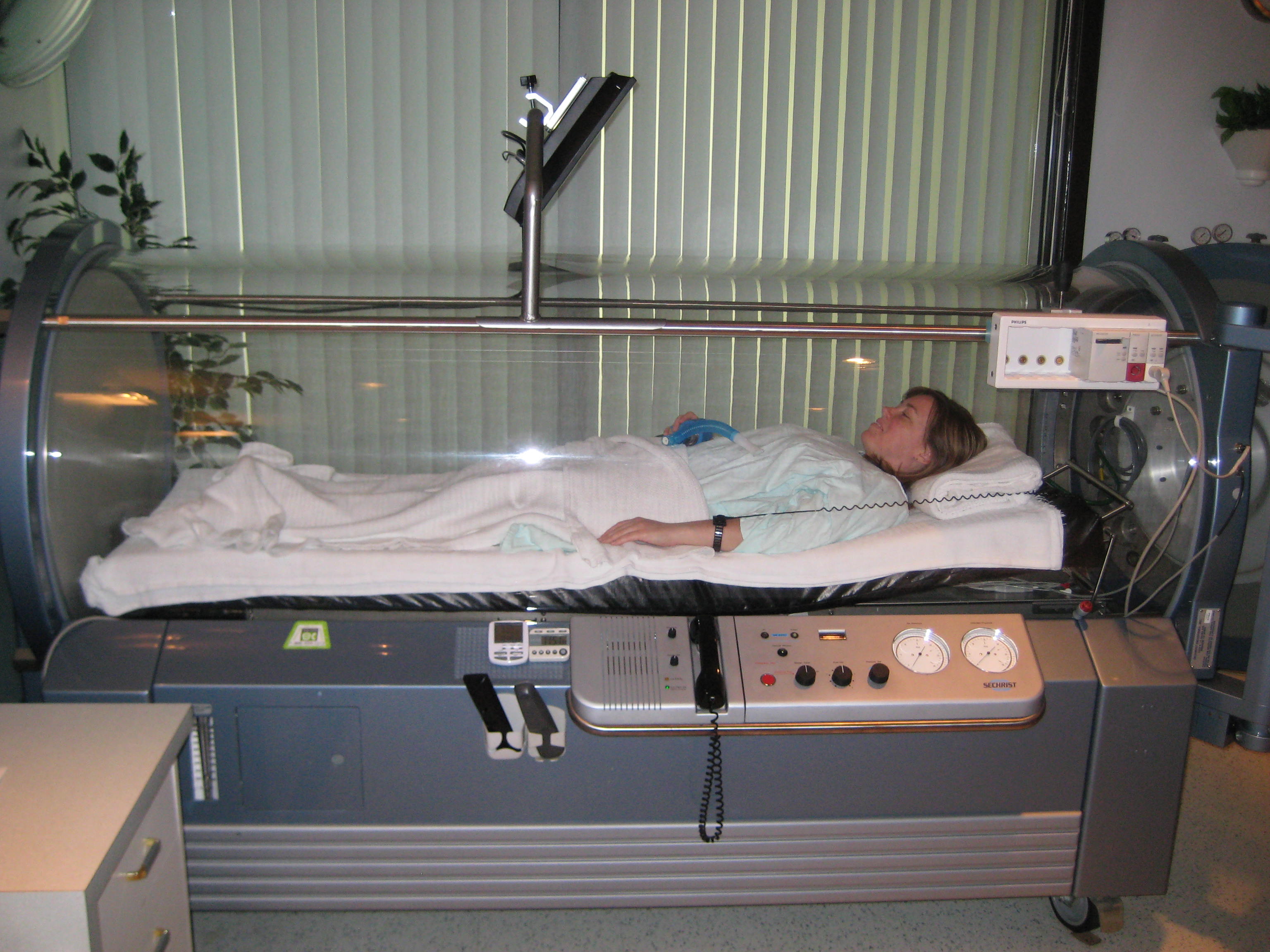
This image is property of upload.wikimedia.org.
Research and Scientific Evidence
Hyperbaric therapy has been the subject of numerous clinical studies and trials to evaluate its effectiveness in various medical conditions. The scientific evidence supports the beneficial effects of hyperbaric therapy in specific situations. Here is an overview of the research and scientific evidence:
Clinical Studies and Trials
Clinical studies and trials have shown positive outcomes in conditions such as diabetic foot ulcers, non-healing wounds, radiation tissue damage, and certain infections. These studies demonstrate the ability of hyperbaric therapy to improve healing outcomes, reduce infection rates, and enhance tissue repair.
In the case of decompression sickness, hyperbaric therapy has been extensively studied and is considered the gold standard treatment.
Effectiveness of Hyperbaric Therapy in Various Conditions
Hyperbaric therapy has proven effective in a range of medical conditions, including:
- Diabetic foot ulcers: Studies have shown enhanced wound healing and reduced amputation rates.
- Non-healing wounds: Hyperbaric therapy has significantly improved healing outcomes in chronic wounds resistant to other treatments.
- Radiation tissue damage: Research has demonstrated the ability of hyperbaric therapy to reduce radiation-induced complications and enhance tissue healing.
- Gas gangrene: Hyperbaric therapy, when combined with appropriate antibiotic treatment, has shown superior outcomes in the management of gas gangrene.
- Traumatic brain injuries: Some studies suggest that hyperbaric therapy may improve brain function and reduce cognitive impairments in patients with traumatic brain injuries.
- Autism: Although more research is needed, some studies have reported improvements in social interaction, communication, and behavior in individuals with autism.
It is important to note that hyperbaric therapy is not a cure-all and may not be suitable for every individual or condition. The decision to pursue hyperbaric therapy should be made in consultation with a qualified healthcare provider who can assess the specific benefits and risks for your situation.
Hyperbaric Therapy Providers
Hyperbaric therapy is available at various medical facilities with specialized hyperbaric chambers and trained healthcare providers. Here are some considerations when seeking hyperbaric therapy providers:
Medical Facilities Offering Hyperbaric Therapy
Hyperbaric therapy is typically available in hospitals, specialized wound care centers, or private clinics. These facilities have the necessary equipment and expertise to administer the treatment safely and effectively.
When choosing a medical facility for hyperbaric therapy, consider factors such as the reputation of the facility, the experience of the healthcare providers, and the availability of additional support services.
Qualifications and Training of Hyperbaric Therapy Providers
It is essential to ensure that the healthcare providers administering hyperbaric therapy are qualified and experienced in this field. Look for providers who have undergone specialized training in hyperbaric medicine or are certified by recognized hyperbaric medicine organizations.
Qualified providers should have a thorough understanding of the therapy, including its benefits and risks, and should be capable of managing any potential complications that may arise during the treatment.

This image is property of i0.wp.com.
Insurance Coverage for Hyperbaric Therapy
Understanding insurance coverage for hyperbaric therapy can help alleviate financial concerns and make the treatment more accessible. Here are some considerations regarding insurance coverage for hyperbaric therapy:
Understanding Insurance Coverage
While hyperbaric therapy is recognized as a legitimate medical treatment, insurance coverage for this therapy can vary depending on the insurance provider, policy terms, and the specific medical condition being treated.
To determine your insurance coverage, it is important to contact your insurance provider and inquire about their policies regarding hyperbaric therapy. They can provide detailed information about any specific requirements, coverage limitations, and reimbursement procedures.
Requirements for Insurance Reimbursement
Insurance providers may require certain criteria to be met for reimbursement of hyperbaric therapy. These criteria can include:
- Prior authorization from the insurance provider
- Medical necessity, as determined by the healthcare provider
- Documentation of the specific medical condition being treated
- Compliance with the prescribed treatment plan
To ensure proper reimbursement, it is crucial to work closely with your healthcare provider and insurance provider, providing all necessary documentation and ensuring that the prescribed treatment meets the requirements set by the insurance company.
Patient Experiences and Testimonials
Hearing about the experiences and success stories of patients who have undergone hyperbaric therapy can provide valuable insights into the potential benefits of this treatment approach. Here are some personal accounts of hyperbaric therapy:
Personal Accounts of Hyperbaric Therapy
Many individuals who have undergone hyperbaric therapy have reported positive outcomes and improved quality of life. Personal accounts often highlight benefits such as accelerated wound healing, reduced pain and inflammation, enhanced energy levels, improved neurological function, and overall well-being.
While personal accounts can be informative, it is important to remember that each individual’s experience and response to hyperbaric therapy can vary. Consultation with a qualified healthcare provider remains essential in determining the suitability and potential benefits of hyperbaric therapy for your individual case.
Success Stories and Improved Quality of Life
Success stories of patients who have benefitted from hyperbaric therapy abound. Whether it is a diabetic patient experiencing faster wound healing or an individual with a traumatic brain injury regaining function and quality of life, these success stories highlight the potential of hyperbaric therapy to make a positive impact.
While success stories can be inspiring, it is crucial to approach hyperbaric therapy as a medical treatment and not solely rely on anecdotal evidence. Consultation with a healthcare provider who can evaluate your specific medical condition and determine the appropriateness of hyperbaric therapy is essential.

This image is property of n2r8m7y5.stackpathcdn.com.
Alternative Therapies and Complementary Treatments
Hyperbaric therapy can be combined with other treatment modalities as part of an integrative approach to patient care. Here are some considerations regarding the combination of hyperbaric therapy with other therapies:
Combining Hyperbaric Therapy with Other Modalities
Hyperbaric therapy can complement other therapies by enhancing their effectiveness and accelerating the healing process. It can be combined with surgical interventions, antibiotic treatments, physical therapy, and other modalities to maximize the benefits and outcomes for the patient.
By working in collaboration with your healthcare provider, an integrative approach can be developed that incorporates hyperbaric therapy alongside other treatments, individualizing the care plan to your specific needs and optimizing overall results.
Benefits of Integrative Approach to Treatment
Integrating hyperbaric therapy with other treatment modalities offers several advantages. It allows for a holistic approach that addresses multiple aspects of a medical condition, including wound healing, infection control, pain management, and neurological rehabilitation.
An integrative approach can also provide a more comprehensive and personalized care plan, tailored to the individual needs and goals of the patient. By combining different treatment modalities, healthcare providers can optimize the outcomes and improve the overall quality of care.
Conclusion
Hyperbaric therapy is a beneficial and versatile medical treatment that can be used to enhance healing, reduce inflammation, and promote overall well-being. With its ability to increase oxygen delivery to the body’s tissues and stimulate various therapeutic effects, hyperbaric therapy has proven to be effective in treating a wide range of conditions.
Although hyperbaric therapy offers numerous benefits, it is important to remember that it should be pursued under the guidance of a qualified healthcare provider. The decision to undergo hyperbaric therapy should be based on careful evaluation of the potential benefits, individual circumstances, and the advice of medical professionals.
By understanding the principles, procedures, and potential risks associated with hyperbaric therapy, you can make informed decisions about its potential role in improving your health and well-being. Whether seeking wound healing, radiation tissue repair, or support in other medical conditions, hyperbaric therapy can be a valuable addition to your treatment plan, supporting your journey towards better health.


